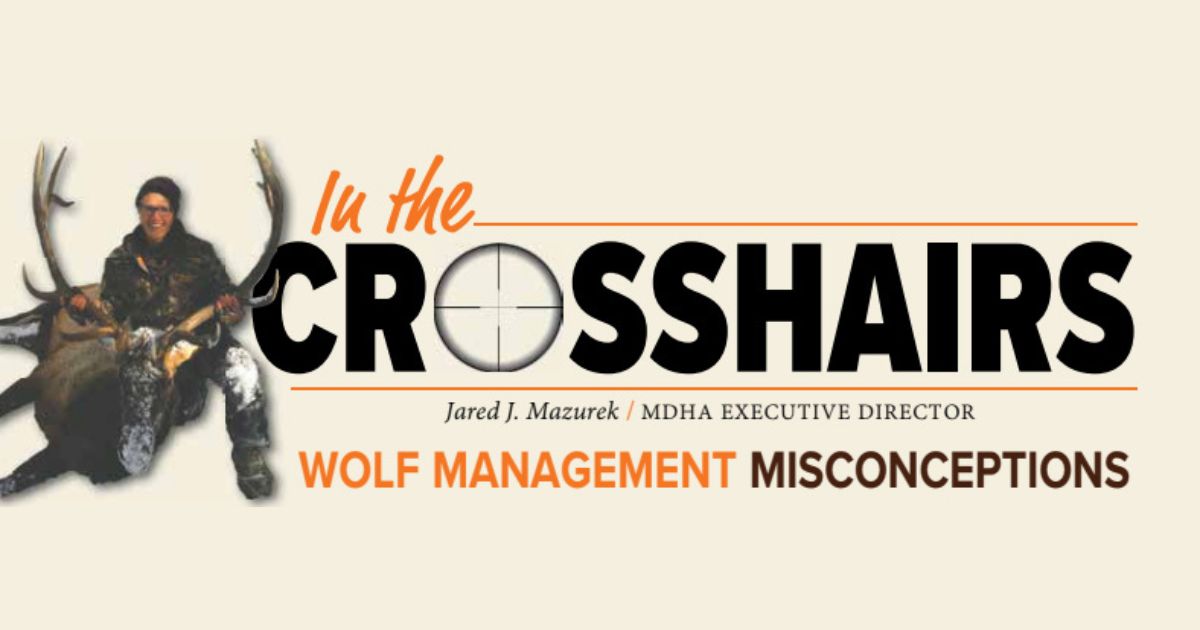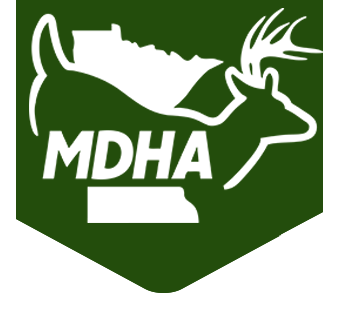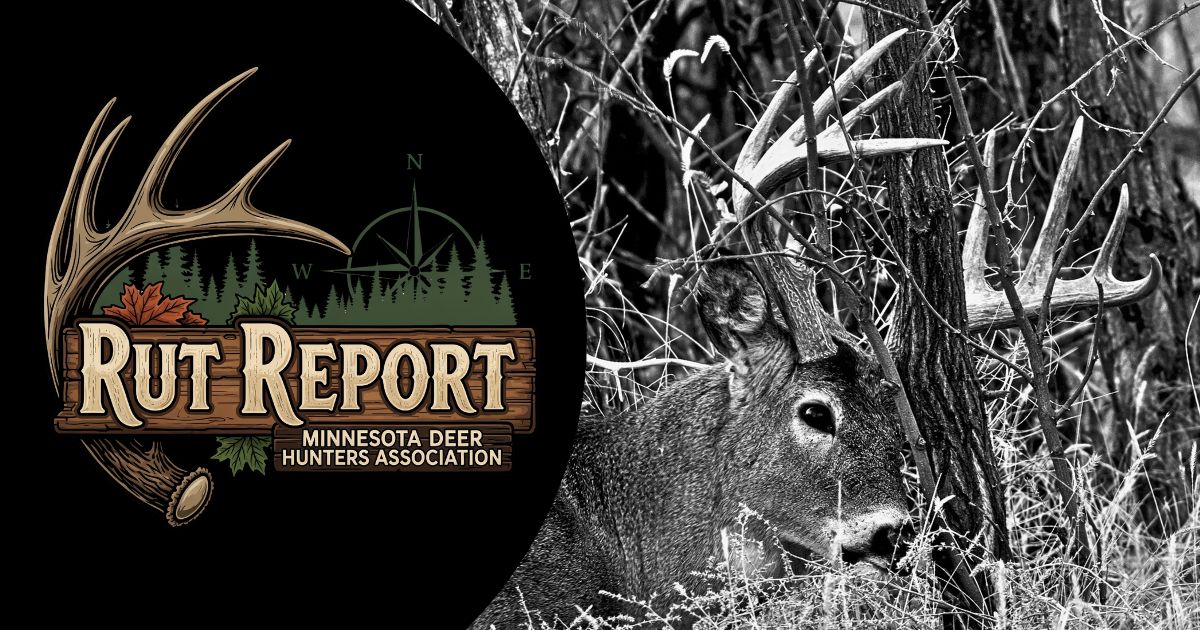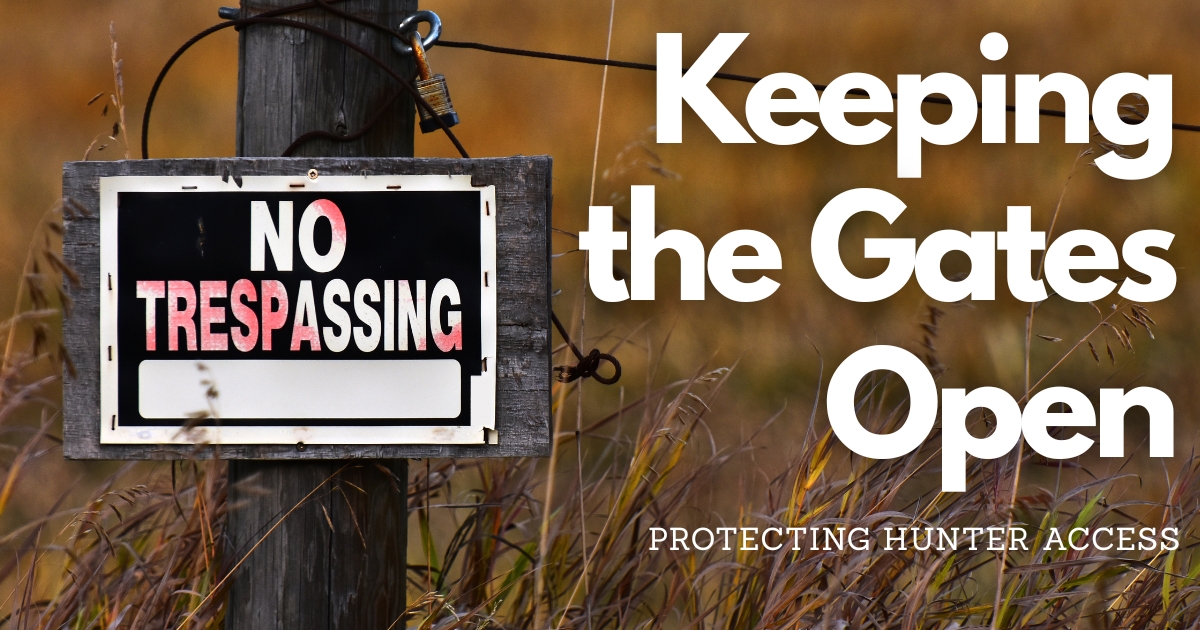
- Jared Mazurek
- Wolf Management
- Hits: 8266
Wolf Management Misconceptions
- Jared Mazurek
- Wolf Management
- Hits: 8266
We believe wholeheartedly that Minnesota should have an open wolf season. Wolf population estimates clearly show that we are above target population numbers. The USFWS set a recovery goal of 1,251-1,400 wolves within the state. To provide a buffer, the DNR expanded that goal to 1,600 wolves. The wolf population in Minnesota has stabilized at around 2,700 wolves. With an increasing human population and resulting habitat fragmentation, this is not an ecologically sustainable population for wolves in the state. Therefore, MDHA believes there should be active wolf management within Minnesota.
In February of 2022, the wolf was reinstated under protections of the Endangered Species Act. Therefore, there is nothing that the State of Minnesota, the DNR, or MDHA can do in regards to an immediate opening of a wolf season. MDHA is advocating at every opportunity to change this.
We know that wolf management works and contributes to critical ecological research. Minnesota held successful wolf hunting seasons in 2012, 2013, and 2014. During these seasons, hunters and trappers were required to register wolves harvested by 10 PM the day of harvest and were also required to monitor by phone or internet the season progress and check for an announcement of season closure when the target harvest by zone or season was reached. Successful hunters and trappers also had to bring harvested wolves to DNR offices for pelt tagging, collection of additional harvest information, and to allow for collection of biological samples. Information was collected from hunters about the location of harvest and biological samples were collected from wolves including a tooth, tissue samples, and female reproductive tracts for characterizing demographics of wolves taken during the season.
Knowing this, I would like to attempt to address some common questions and misconceptions that I hear frequently regarding wolf management in Minnesota.
1.Why can Alaska and the Northern Rocky Mountain States (Idaho, Montana, and Wyoming) hold wolf seasons, but Minnesota cannot?
Alaska is a unique case in that it was guaranteed full authority to manage its fisheries and wildlife when granted its statehood in 1959. This authority was further solidified with the passage of the Alaska National Interest Lands Conservation Act (ANILCA) in 1980. With these laws, Alaska maintains full authority to manage their wolf population through hunting and trapping.
The Northern Rocky Mountain States saw wolf reintroduction in the mid 90’s. With this reintroduction, these states were able to lobby for the condition that there be a mandatory open wolf season should the species be reintroduced. For this reason, these states are still able to manage their wolf population regardless of their status under the Endangered Species Act (ESA). However, there are continued attempts to reverse this ruling and prohibit wolf hunting and trapping within these states.
Minnesota is unique in that we are the only state in the lower 48 that has always had a wolf population and did not go through a reintroduction process. Without the opportunity to lobby for active wolf management as a prerequisite to reintroduction, Minnesota is beholden to all protections granted under the ESA.
2. Despite being illegal at the federal level, why can marijuana sales occur within the state but wolf management cannot?
Let me begin by stating that I am in no way a legal expert or authority, but will attempt to provide a simplified explanation. The 10th amendment states that “the powers not delegated to the United States by the Constitution, nor prohibited by it to the States, are reserved to the States respectively, or to the people.” In simple terms, this means that the Federal Government has only the powers that are explicitly outlined within the constitution, the rest are given to the States. Furthermore, due to the supremacy clause, when a state law conflicts with a federal law, the federal law takes priority.
The issue then, lies in enforcement of the laws. When a state legalizes marijuana, and contains the industry within state borders, the federal government has made the decision not to intervene. Marijuana law is not unique in this approach from the federal government. So why then can’t we take this approach to wolf management?
For this, we must look at a key difference between marijuana legalization and wolf management as well as Supreme Court precedent. This key difference is that Marijuana can be regulated by, and contained within, state lines, theoretically leaving a state capable of managing the industry on its own. Wolves (and all wildlife) on the other hand, are a natural, public resource that travel across state and international borders on a regular basis. This means that the management decisions of a single state and the resulting impacts of those decisions, are not contained within state borders. Therefore, the federal government and the Supreme Court have made it clear that ESA protections will be enforced at the federal level, and any conflicting state laws will be subject to the supremacy clause.
3. What is MDHA doing to open a wolf season in Minnesota?
We are working at all levels of government to return management of the wolf population back to the State of Minnesota. Specifically, I serve on the MN Deer Advisory Council and we have been very involved with the development and implementation of Minnesota’s updated Wolf Plan. These have both been great opportunities to advocate on behalf of our members and conservationists around the state in regards to wolf management.
Also, we are very active at the State Capitol and support every bill that aims to return wolf management to the state. This past legislative session, we authored a letter to our state legislators and built a coalition of signers from other conservation organizations within the state. Through this, we were successful in killing a piece of legislation that aimed to prohibit the possibility of any future wolf hunt. We are also active at the county level. We have distributed letters to county commissioners within the wolf range to encourage them to sign a resolution of support for future managed wolf seasons in Minnesota.
We also work at the federal level to encourage state congressmen and congresswomen to support states’ autonomy in wildlife management decisions. Specifically, we have recently been working to get our congresspeople to support the Trust the Science Act that was introduced this past year. This act would delist the gray wolf and return management to the states.
Lastly, we engage our members and encourage them to contact their senators and representatives. Let them know where you stand on wolf management and encourage them to support the Trust the Science Act. We have a responsibility to manage our resources responsibly and to ensure a sustainable future for the entire ecological landscape in Minnesota.
I hope you had a successful and memorable 2023 hunting season and wish you all health and happiness this holiday season!





